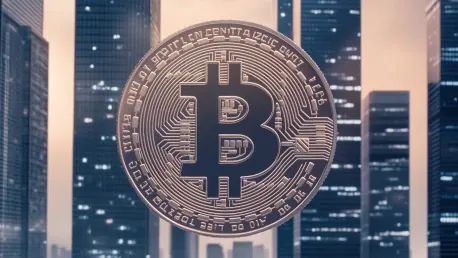The sudden announcement of United States President Donald Trump’s executive order to establish a Bitcoin strategic reserve has ignited widespread confusion and disappointment within the cryptocurrency market. Even the crypto enthusiasts who generally welcome governmental interest in digital assets expressed concerns, as Bitcoin’s value plummeted by up to 6 percent shortly after the announcement. By the early hours of 05:00 GMT, Bitcoin saw a significant drop to $84,900 before stabilizing around $87,700, leaving investors questioning the effectiveness of Trump’s ambitious plan. The timing of this decline has been particularly unsettling, as many expected the government’s active procurement of Bitcoin to bolster its price.
The Executive Order and Market Reaction
The initial excitement over Trump’s executive order quickly transformed into uncertainty and criticism as details of the plan were disclosed. The order was introduced by David Sacks, Trump’s crypto advisor, and outlined a strategy to capitalize the reserve with Bitcoin and other digital assets obtained through criminal or civil forfeiture proceedings, ensuring no taxpayer money would be used. Although the notion of creating a digital asset reserve was appealing, the absence of a clear government purchasing strategy left investors worried about its immediate impact on the market. Reports suggest that the United States currently holds approximately 200,000 Bitcoin, but the lack of a comprehensive audit has made the situation even more opaque.
A crucial component of the executive order involves a detailed accounting of federal digital assets and budget-neutral strategies to acquire more Bitcoin. These strategies rely on contributions from the Secretaries of Treasury and Commerce to come up with acquisition plans that do not impose additional costs to taxpayers. Despite the assurance of fiscal prudence, the market’s reaction indicated a serious lack of confidence. The promise of no new taxpayer costs seemed implausible to investors who are often wary of governmental financial claims. This skepticism reflected in Bitcoin’s volatile performance after the announcement, which in turn spurred further criticism from financial analysts and crypto enthusiasts alike.
Criticisms and Historical Mismanagement
Among the vocal critics of Trump’s plan was German tech entrepreneur Shayan Salehi, who underscored the absence of direct government purchases as a significant flaw. According to Salehi, this gap might trigger a prolonged bear market for Bitcoin, contrary to Trump’s vision of making the U.S. a leading “crypto capital.” Spencer Hakimian from Tolou Capital Management also expressed doubts about the plan’s feasibility, deeming it “underwhelming” and calling into question the realism of the budget-neutral promise. Hakimian pointed out that historical government actions rarely end up being revenue-neutral, adding another layer of apprehension for those in the industry.
Adding to the anxiety is the U.S. government’s historical mismanagement of Bitcoin sales, which have already resulted in an estimated $17 billion loss to taxpayers due to premature and poorly timed transactions. This regrettable history casts a long shadow over the new proposed strategy, which aims to maximize the value of existing holdings through more strategic management. Despite noble intentions, the damage caused by previous mistakes continues to feed a climate of skepticism and caution, making it challenging for the Trump administration to garner widespread support for the initiative.
Controversies and Future Considerations
The executive order goes beyond just Bitcoin, extending its reach to other digital assets such as ether, XRP, Solana, and Cardano retrieved through criminal or civil forfeiture. However, the expanded scope has not managed to ease concerns. The digital asset community remains divided, with many skeptical about the government’s ability to manage and capitalize on these assets efficiently. While the idea of diversifying the federal reserve with various cryptocurrencies sounds advantageous, it does not assuage the existing fears linked to governmental oversight and execution.
Another point of contention surrounds the Trump family’s significant investments in cryptocurrency. Following Trump’s election in November, Bitcoin’s value surged to an all-time high by January, prompting scrutiny over the family’s accumulating wealth in crypto. Critics have also raised alarms over the official Trump meme coin, questioning its legitimacy and motives. The ongoing debate about the intrinsic value of cryptocurrencies, with some equating them to Ponzi schemes, adds another complex layer to the discussion. This skepticism makes it difficult for even a high-profile endorsement from the President to reassure the broader market.
Next Steps and Future Outlook
The unexpected announcement from President Donald Trump about an executive order to establish a Bitcoin strategic reserve has caused significant confusion and disappointment in the cryptocurrency market. Even those typically enthusiastic about government involvement in digital assets were concerned, as Bitcoin’s value dropped by up to 6 percent almost immediately after the news. By 05:00 GMT, Bitcoin’s price plunged to $84,900 before eventually stabilizing around $87,700. Investors are now left questioning the success of Trump’s ambitious plan. The timing of this decline is particularly troubling, as many believed the government’s active purchase of Bitcoin would support its price. The market’s reaction underscores the unpredictable nature of cryptocurrency investments and the potential impact of government actions on the market. Skepticism now looms over whether such strategic reserves can positively influence Bitcoin’s value or if they will lead to more volatility and uncertainty for investors.









